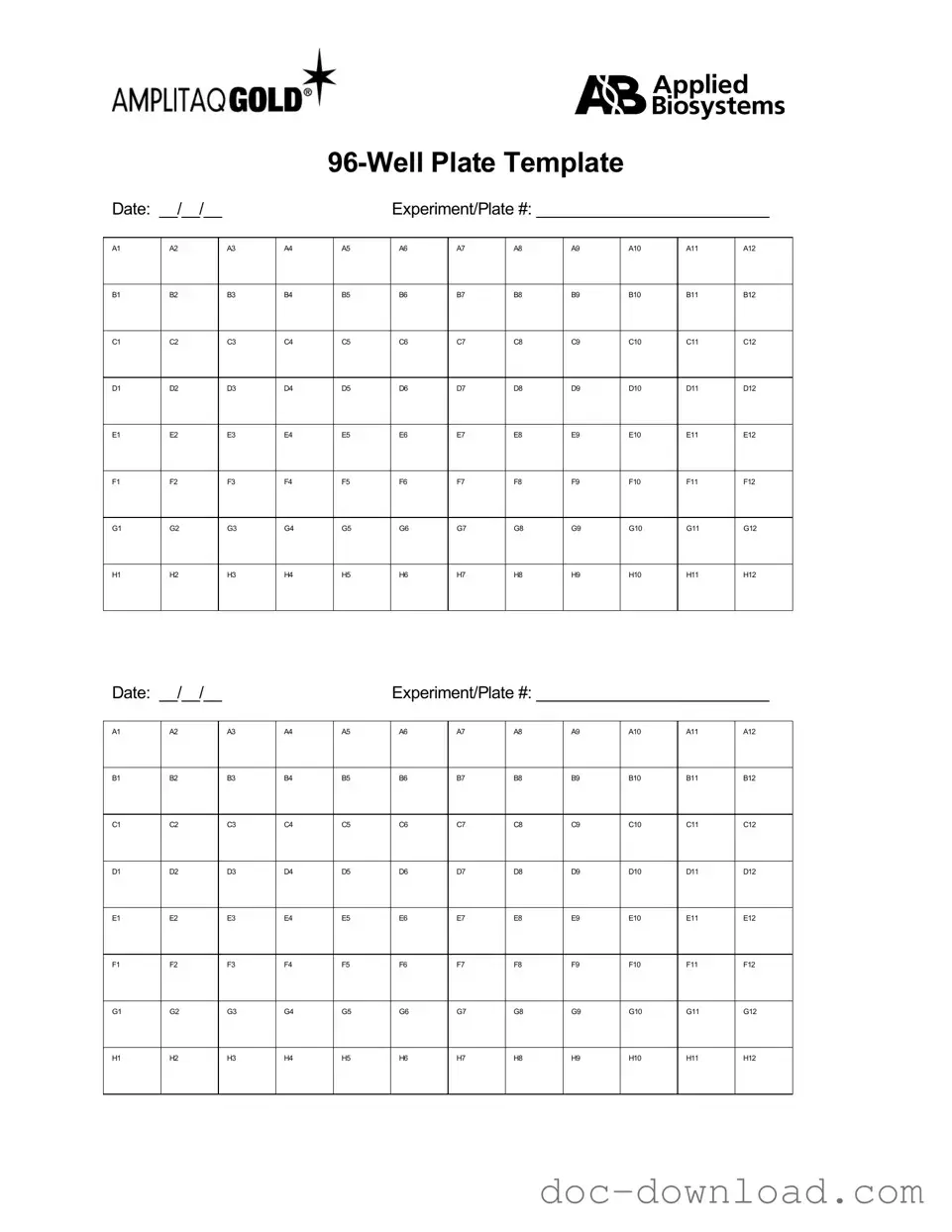The 96 Well form is quite similar to the Laboratory Request Form, which is often used in medical and research settings. Both documents facilitate the organization of samples and ensure that all necessary information is collected for processing. The Laboratory Request Form typically includes details such as patient information, the type of tests requested, and specific instructions for handling samples. Just like the 96 Well form, it helps streamline the workflow and maintain accuracy in sample identification and tracking.
The Quitclaim Deed form is essential in property transfers, notably used in Colorado, where individuals can efficiently manage their ownership rights. This legal tool is particularly beneficial for family transactions and resolving title discrepancies. For those looking to facilitate this process smoothly, resources like Colorado PDF Forms provide valuable templates and guidance.
Another document that shares similarities with the 96 Well form is the Chain of Custody form. This form is essential in legal and forensic contexts, as it tracks the handling of evidence. Both forms require meticulous documentation to ensure that samples are properly accounted for and that their integrity is maintained. The Chain of Custody form includes details about who collected the sample, when it was collected, and any transfers that occurred, paralleling the information captured in the 96 Well form.
The Sample Submission Form also resembles the 96 Well form in its purpose of collecting pertinent information before analysis. This form is used in various laboratories to gather details about the samples being submitted, including their origin and the analyses requested. Like the 96 Well form, it ensures that all necessary information is readily available, which aids in the efficient processing of samples.
Additionally, the Patient Information Form is another document that aligns with the 96 Well form. This form collects essential details about the patient, such as demographics and medical history. While the 96 Well form focuses on the specifics of the samples, the Patient Information Form ensures that the context surrounding those samples is well-documented. Both forms are crucial for maintaining accurate records and facilitating effective communication among healthcare providers.
The Inventory Tracking Form is also similar to the 96 Well form, as it is used to keep track of samples and their status within a laboratory. This document typically includes details about the sample type, storage location, and any relevant notes regarding its condition. Just as the 96 Well form organizes sample information for testing, the Inventory Tracking Form helps ensure that all samples are accounted for and easily accessible when needed.
Lastly, the Test Result Report can be compared to the 96 Well form in terms of its role in documenting outcomes. While the 96 Well form is primarily focused on sample collection and organization, the Test Result Report summarizes the findings from the analysis of those samples. Both documents are integral to the laboratory process, with the former laying the groundwork for successful testing and the latter providing essential feedback on the results.

